Rebuilding after Typhoon Haiyan (Yolanda)
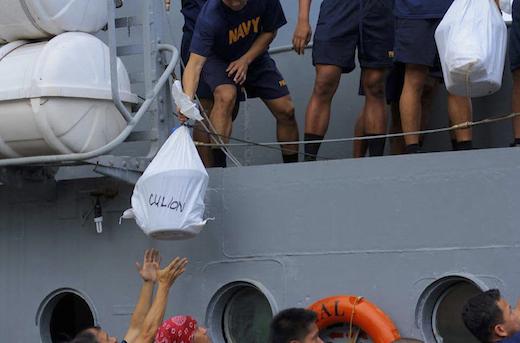
Three weeks after Typhoon Haiyan (“Yolanda” in the Philippines) wreaked widespread devastation on the Philippines, the survivors are slowly beginning to pick up the pieces.
The official death toll of 5,500 as of November 27 makes the typhoon the deadliest storm in the country’s history – and the number of dead is expected to increase.
“We’re just waiting for the casualty report from Task Force Yolanda…[The death toll] should increase later today or tomorrow,” Defence Undersecretary Eduardo del Rosario, executive director of the National Disaster Risk Reduction and Management Council, said at a televised news conference.
The disaster panel said 1,757 people are missing and 3.54 million people are displaced because of Haiyan, which whipped up a 15-foot-high storm surge that drowned many people and affected close to 10 million people. More than one million houses were damaged. Government estimates put the cost of the damage at close to US$6 billion.
A Wall Street Journal article quotes a presidential spokesman saying that work has begun on bunk houses to shelter people left homeless by the storm in Tacloban, Palo, and Ormoc on Leyte island, and Basey and Marabut on Samar island. “At least 2,400 families will be resettled in this first phase,” he said, adding that the government is pushing hard to get affected areas back to normal. In Tacloban, 78% of the city has been cleared of debris, and public utilities are starting to operate in the city centre.
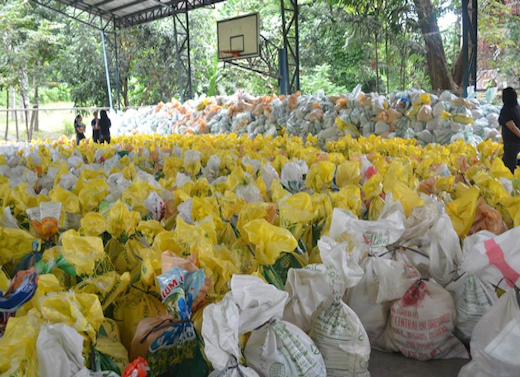
Typhoon Haiyan relief supplies packed by SLB volunteersTyphoon Haiyan – SLB relief programme, Bangon PilipinasSimbahang Lingkod ng Bayan (SLB), the social justice arm of the Jesuit Philippine Province, has also begun rehabilitation efforts. SLB swung into action shortly after Typhoon Haiyan struck on November 8 with an emergency relief programme, Bangon Pilipinas (Rise Philippines). Bangon Pilipinas rallied thousands of volunteers to pack and distribute food, water, clothes, and other relief supplies to more than 16,000 people in affected areas such as Culion, Tacloban, Leyte, Samar and Capiz.
On November 11, Philippine Jesuit Provincial, Fr Antonio Moreno SJ, issued an appeal to Jesuits communities for assistance to the victims of the typhoon. In his letter, Fr Moreno said the country was still reeling from the Zamboanga City siege and the earthquake that struck Bohol and Cebu in October, and with evacuees in those afflicted regions still homeless, new crises arise from people suffering as a result of the typhoon. In view of this and the long-term consequences, Fr Moreno asked the Jesuits to simplify any Christmas or other celebrations over the coming months in solidarity with victims and to give attention to the needed long-term recovery.
Jesuit communities across the world have responded to the appeal. “The support and solidarity of the different Conferences, Provinces, Regions and from Fr General himself have been extremely overwhelming and heart-warming,” said Fr Moreno. “Some even tapped their partners and other communities to assist. Others would like some long-term development programmes to assist affected communities. One Jesuit community is fasting for four Fridays, taking only water and bread. The would-have-been expenses for these meals will be sent to typhoon ravaged areas.”
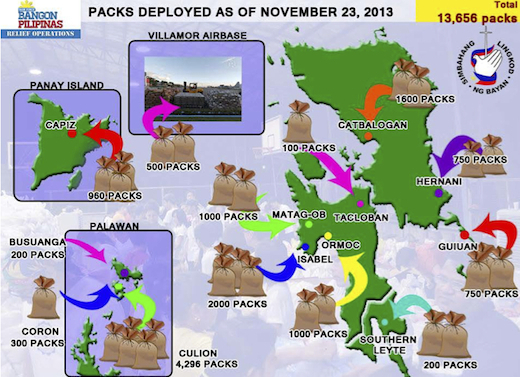
With the emergency relief programme concluded on November 24, SLB is now finalising rehabilitation plans. These will largely be focused on Culion, Palawan, the Jesuit mission island that was once the world’s largest leper colony. Culion was the last place hit by the typhoon and, although it was little mentioned in the media, local contacts show that 3,750 families (15,518 individuals) were affected. More than 1,000 houses were totally destroyed and about 2,000 partially damaged.
SLB director Fr Xavier Alpasa SJ said a team will go to Culion on December 6 for community validation. They will look into rehabilitation prospects in housing, livelihood, purchasing of boats, renewable energy, psycho-social interventions and social entrepreneurship ventures.
The rehabilitation plan to be implemented in 2014 with a 3-year time frame includes the construction of houses and boats for the fishing communities; and education and training for jobs. There is also a plan to install solar panels for electricity. The typhoon caused total power failure on Culion, which only had 12 hours of electricity a day before. Power is estimated to be restored in January.
Simbahang Lingkod ng Bayan (SLB) through its Director, Fr Xavier Alpasa SJ, is coordinating all our efforts to assist victims of Yolanda.
Funds can be transferred through its bank (BPI [Loyola-Katipunan Branch], Peso Checking Account # 3081-111-61, Dollar Account # 3084-0420-12, Swift code should be BOPIPHMM, Routing #: 021-000-21). In the Philippines, cheques can be made out to Simbahang Lingkod ng Bayan, Loyola House of Studies, Ateneo de Manila University Campus, Loyola Heights, 1108 Quezon City.
The Philippine Jesuit Foundation (PJF) in New York also accepts donations. Please ask your contacts and friends to indicate in the memo “Yolanda Calamity Fund” to avail of the free service fee. PJF Donors can also earn tax credit for every donation made. Bank transfers in the US can be made through our Merrill Lynch bank (Account # 176-04A01). Checks in the US can be addressed to The Philippine Jesuit Foundation, PO Box 312, New York, NY 10028, USA, through Fr Victor R Salanga SJ.
In Australia, donations for the Philippines are being received at Jesuit Mission Australia. Go to http://www.jesuitmission.org.au/site/5/donations. Donations can be made online or by telephone, fax or post by credit card. Call +6129955 8585.
Donations made through JCAP will be channelled to where they can be most effective.
For more information on SLB’s rehabilitation work in support of Typhoon Haiyan survivors, contact SLB at slb.ph.
Typhoon Haiyan (Yolanda) Social Justice & Ecology Philippines
Pope asks to meet reformed Indian killer
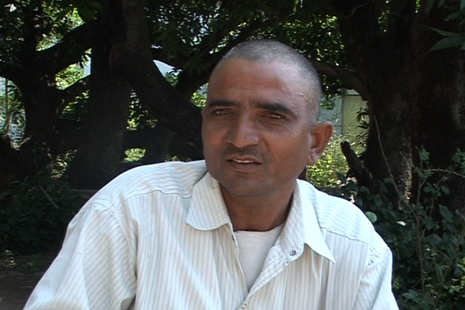
Eighteen years after Samunder Singh stabbed and murdered a Catholic nun in northern India, the former prisoner has been invited to meet Pope Francis at the Vatican.
Archbishop Vincenzo Paglia, president of the Pontifical Council for Family, invited Singh after the pope expressed his desire to meet him. Accompanying him will be a Catholic priest and a nun, the younger sister of the slain Rani Maria.
“I am excited after getting the news,” 40-year old Singh told ucanews.com.
Singh, who with the guidance of the Catholic priest repented of his actions while serving a 12-year jail term, is busy preparing his travel documents.
The priest, popularly known as Swami Sadanand, was instrumental in counseling Singh after the killing. The Carmelite of Mary Immaculate regularly met him in jail.
The invitation to the Vatican is to attend a special screening of a documentary on the killing, called The Heart of a Murderer, by award winning Australian-Italian director Catherine McGilvray.
The documentary depicts the murder, Singh’s conversion and his acceptance by the murdered nun’s family. McGilvray, in an interview, said when she first heard the story, she was moved by the images of “the mother kissing her daughter’s murderer and of the assassin becoming like a real brother to the sister of his victim.”
Pope Francis was reportedly moved by the film.
The family of the slain nun had publically forgiven him and accepted him as one of their family members. Every year on the Hindu festival of siblings, the sister of Rani Maria ties a rakhi, or ceremonial thread, onto Singh. The ritual is a common practice among siblings.
The murdered nun was declared a Servant of God, the first major step toward canonization, in 2007.
Related reports
Church Recalls Murdered Nun´s Service To Poor
Vatican official visits nun’s tomb
Christian families light up society, Pope tells pilgrims
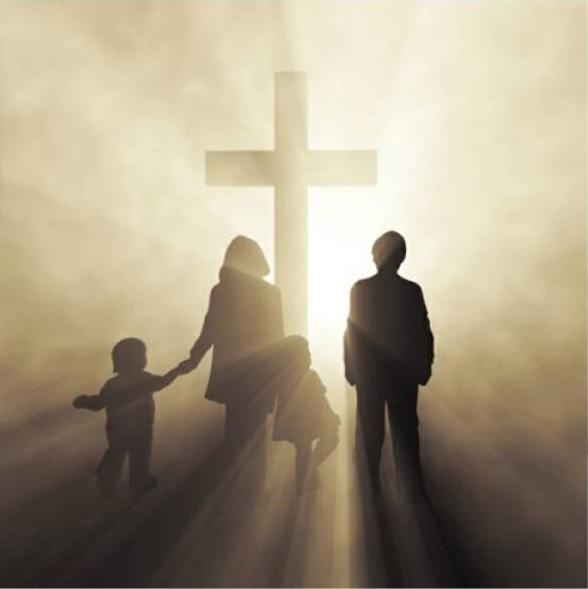
“Christian families are missionary families,” Pope Francis said in his homily on October 27, as he celebrated Mass in St. Peter’s Square to conclude a Pilgrimage for Families.
The Pilgrimage, organized for the Year of Faith, had drawn more than 150,000 people to St. Peter’s Square the previous day. After completing their family pilgrimages to the tomb of St. Peter, the participants gathered in the Square to hear testimony from several families, and then an address by the Pope.
Responding to several people who spoken of the difficulties that families face, the Pontiff acknowledged: “Life is often wearisome, and many times tragically so. We have heard this recently.” However, he continued, “what is most burdensome in life is not this: what weighs more than all of these things is a lack of love.”
“Dear families, the Lord knows our struggles,” the Holy Father said, repeating with emphasis: “He knows them!” He encouraged the pilgrimage families to persevere amid difficulties and to have faith in God and in each other. He warned them, “do not pay attention to this makeshift culture, which can shatter our lives.”
In his homily at the Sunday Mass, the Pope mentioned three important characteristics of families:
First, “the family prays.” Pope Francis reminded the faithful to pray in the fashion of the tax collector from the Gospel story: “humbly, before God.” For the family, he suggested, saying the Our Father together “is not something extraordinary; it’s easy.” Praying the Rosary as a family “is very beautiful and a source of great strength,” he said. The Pope added that family members should not forget to pray for each other.
Second, “the family keeps the faith,” the Pope continued. Here he stressed the missionary dimension of family life:
How do we keep our faith as a family? Do we keep it for ourselves, in our families, as a personal treasure like a bank account, or are we able to share it by our witness, by our acceptance of others, by our openness?
Finally, the Pope said, “the family experiences joy.” A family that lives by the light of Christian faith will naturally communicate that joy, he said. “That family is the salt of the earth and the light of the world, it is the leaven of society as a whole.”
St. Edmund Campion
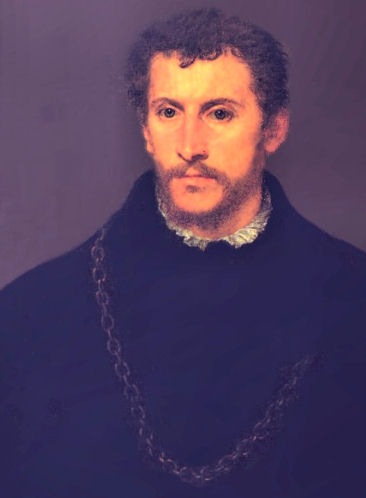
Edmund was born in London, the son of a bookseller. He was raised a Catholic, given a scholarship to St. John’s College, Oxford, when fifteen, and became a fellow when only seventeen. His brilliance attracted the attention of such leading personages as the Earl of Leicester, Robert Cecil, and even Queen Elizabeth. He took the Oath of Supremacy acknowledging Elizabeth head of the church in England and became an Anglican deacon in 1564. Doubts about Protestanism increasingly beset him, and in 1569 he went to Ireland where further study convinced him he had been in error, and he returned to Catholicism. Forced to flee the persecution unleashed on Catholics by the excommunication of Elizabeth by Pope Pius V, he went to Douai, France, where he studied theology, joined the Jesuits, and then went to Brno, Bohemia, the following year for his novitiate. He taught at the college of Prague and in 1578 was ordained there. He and Father Robert Persons were the first Jesuits chosen for the English mission and were sent to England in 1580. His activities among the Catholics, the distribution of his Decem rationes at the University Church in Oxford, and the premature publication of his famous Brag (which he had written to present his case if he was captured) made him the object of one of the most intensive manhunts in English history. He was betrayed at Lyford, near Oxford, imprisoned in the Tower of London, and when he refused to apostatize when offered rich inducements to do so, was tortured and then hanged, drawn, and quartered at Tyburn on December 1 on the technical charge of treason, but in reality because of his priesthood. He was canonized by Pope Paul VI in 1970 as one of the forty English and Welsh Martyrs. His feast day is December 1.
A Few Good Catechetical Books
Looking for some good, solid, basic, inviting, user-friendly books on the faith? My friend Msgr. Peter Vaghi, a fine writer, indefatigable priest

Besides the fact that (full disclosure) we’re now friends, I’m not sure why I like his books so much. But I can venture a guess: they are at once firmly grounded in Scripture and tradition, well written, clear, orthodox, to the point–and, best of all, wonderfully concise.
This summer he is finishing The Commandments We Keep: A Catholic Guide to Living a Moral Life, the third book in the series, which should be out next spring. The first book, which has sold extremely well is The Faith We Profess: A Catholic Guide to the Apostles’ Creed. It takes the reader step-by-step through the Creed, a good idea since most of us-even me–need to be refreshed from time to time on what “one in being” means, for example. The second book, which was published this past spring, is The Sacraments We Celebrate: A Catholic Guide to the Seven Mysteries of Faith. It shows how each of the sacraments is a transforming encounter with Christ, in his dying and rising. It reflects the church teaching on sacramental theology as well as Msgr. Vaghi’s 25 years of pastoral work. His zest for Catholicism and for Christ are evident in his writing; the books are “catechetical” in the best sense.
His new book, he tells me, will analyze first, “The Jewish Understanding of the Commandment”; second, “The Effect of the Christ Event on the Commandment”; and third, “Pastoral and Practical Implications of the Commandment.” He hopes later on to have a fourth book on prayer. Overall, the series will focus on faith, sacraments, moral life and prayer, thus mirroring the four-fold foundation of the Catechism of the Catholic Church–the four pillars of our faith.
Anyway, now you can’t say (a) you have nothing to read or (b) you have nothing to use in your parish.
And if that’s still not enough reading for you, check out my ten-year list of suggested readings for Catholic book clubs here.
Catholicism and Libertarianism
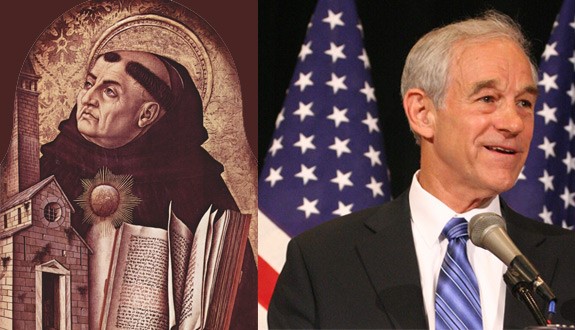
Earlier this year, a friend and I attended the Ludwig von Mises Institute conference in Houston, Texas. The conference centered upon an analysis of the current financial challenges facing our country, and a discussion of some economic and political solutions. Since the keynote speaker was Ron Paul, I thought it was safe to say the majority of those in attendance identified themselves as libertarians, either socially or philosophically. But I learned otherwise. During the first session break, following Lew Rockwell’s lecture, I began talking with a young man by the name of Bo. After a brief introduction and small talk, Bo quickly asked, “So, I am guessing you are a libertarian?”
“No,” I responded. “I am actually a Thomist.”
To my astonishment and joy, Bo knew what this meant, for he himself had read Aquinas in college, and said that Aquinas changed the way he viewed, and did, philosophy. Bo did favor the libertarian view of politics, and he was intrigued as to why I was there, perhaps hoping that my presence was a sign of “conversion.” I informed him that, as a Thomist, I disagreed with many of the libertarian positions, but was willing to affirm whatever was true in what libertarians held and taught.
To be a Thomist is not simply to hold to a particular set of doctrines (it is that, as well), but, more importantly, it is a way of viewing everything-a manner of distinguishing and separating in order to unite, thereby seeing the relation of the parts to the whole. Ultimately, it is the search for truth as the end of the human intellect, pursuing it wherever it can be found, no matter its source. Ralph McInerny provides a magnificent insight on the authentic image of a Thomist in his book Thomism in an Age of Renewal:
One reads Thomas with the growing awareness that he was, in principle, interested in anything available to him, from whatever source it came; moreover, the sympathy with which he reads authors whose fundamental tenets are opposed to his own, the value he insists on finding truth in whatever he reads, is something almost unique in the history of philosophy. (p 52)
What, then, does Thomism have to do with libertarianism? The recent presidential election and subsequent political battles have revealed a strong tendency among some Catholics to attempt an integration of the tenets of libertarianism and Catholic social teaching. While it is true that there are libertarian positions that are fully in accord with Catholicism, it must be emphasized that the integration is quite complex and, at a certain level, quite difficult, even impossible.
St. John Berchmans
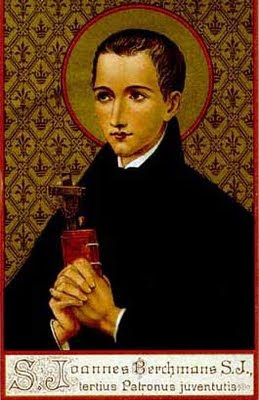
Eldest son of a shoemaker, John was born at Diest, Brabant. He early wanted to be a priest, and when thirteen became a servant in the household of one of the Cathedral canons at Malines, John Froymont. In 1615, he entered the newly founded Jesuit College at Malines, and the following year became a Jesuit novice. He was sent to Rome in 1618 to continue his studies, and was known for his diligence and piety, impressing all with his holiness and stress on perfection in little things. He died there on August 13. Many miracles were attributed to him after his death, and he was canonized in 1888. He is the patron of altar boys. His feast day is November 26.
Bl. Michael Augustine Pro
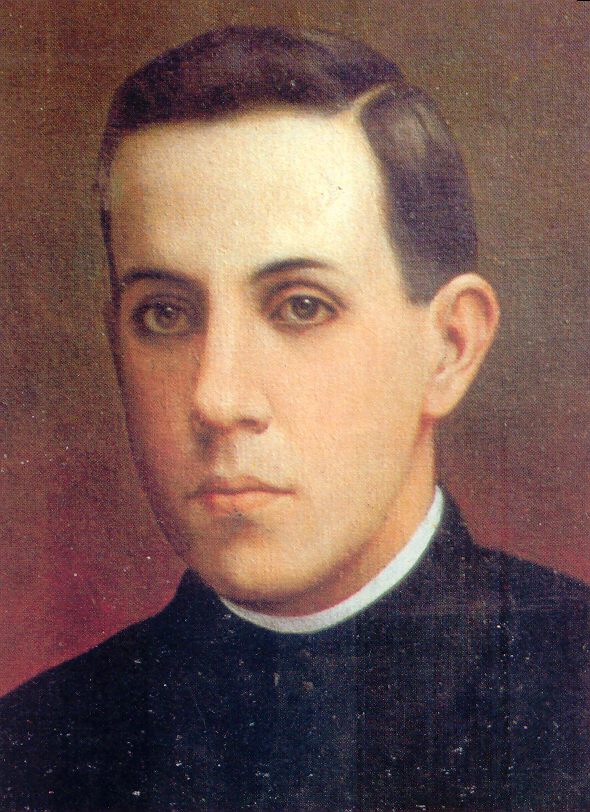
Born on January 13, 1891 in Guadalupe, Mexico, Miguel Agustin Pro Juarez was the eldest son of Miguel Pro and Josefa Juarez.
Miguelito, as his doting family called him, was, from an early age, intensely spiritual and equally intense in his mischievousness, frequently exasperating his family with his humor and practical jokes. As a child, he had a daring precociouness that sometimes went too far, tossing him into near-death accidents and illnesses. On regaining consciousness after one of these episodes, young Miguel opened his eyes and blurted out to his frantic parents, “I want some cocol” (a colloquial term for his favorite sweet bread). “Cocol” became his nickname, which he would later adopt as a code name during this clandestine ministry.
Miguel was particularly close to his older sister and after she entered a cloistered convent, he came to recognize his own vocation to the priesthood. Although he was popular with the senoritas and had prospects of a lucrative career managing his father’s thriving business concerns, Miguel renounced everything for Christ his King and entered the Jesuit novitiate in El Llano, Michoacan in 1911.
He studied in Mexico until 1914, when a tidal wave of anti-Catholicism crashed down upon Mexico, forcing the novitiate to disband and flee to the United States, where Miguel and his brother seminarians treked through Texas and New Mexico before arriving at the Jesuit house in Los Gatos, California.
In 1915, Miguel was sent to a seminary in Spain, where he remained until 1924, when he went to Belgium for his ordination to the priesthood in 1925. Miguel suffered from a severe stomach problem and after three operations, when his health did not improve, his superiors, in 1926, allowed him to return to Mexico in spite of the grave religiouspersecution in that country.
The churches were closed and priests went into hiding. Miguel spent the rest of his life in asecret ministry to the sturdy Mexican Catholics. In addition to fulfilling their spiritual needs, he also carried out the works of mercy by assisting the poor in Mexico City with their temporal needs. He adopted many interesting disguises in carrying out his secretmininstry. He would come in the middle of the night dressed as a beggar to baptize infants, bless marriages and celebrate Mass. He would appear in jail dressed as a police officer to bring Holy Viaticum to condemned Catholics. When going to fashionable neighboorhoods to procure for the poor, he would show up at the doorstep dressed as a fashionable businessmam with a fresh flower on his lapel. His many exploits could rival those of the most daring spies. In all that he did, however, Fr. Pro remained obedient to his superiors and was filled with the joy of serving Christ, his King.
Falsely accused in the bombing attempt on a former Mexican president, Miguel became a wanted man. Betrayed to the police, he was sentenced to death without the benefit of any legal process.
Wisdom Story – 76

by Paul Brian Campbell,SJ
Ardent (!) PFO-er Michelle sent me a great story which I am delighted to share with you.
Three monks knelt in the dark morning hours before dawn. The first thought he saw the figure of Jesus come down from the cross and rest before him in midair. Finally, he said to himself, I know what contemplation is.
The second felt himself rise out of his place in the choir. He soared over his brother monks and surveyed the timber-vaulted ceiling of the church, and then landed back in his place in the choir. I’ve been blessed, he thought, with a minor miracle, but in humility I must keep it to myself.
The third felt his knees growing sore and his legs tired. His mind wandered until it came to a stop on the image of a luscious hamburger laden with onions and pickles.
No matter how hard I try, said the devil’s helper to his master, “I can’t seem to tempt this third monk.”
Horca del Inca, Copacabana

The Horca del Inca (“Inca Gallows”) in Copacabana is an interesting trilithic structure used for astronomical purposes by the pre-Incan Chiripa people.
History
Despite its name, the Horca del Inca was built by the pre-Inca Chiripa culture in the 14th century BC as an astronomical observatory. Rituals on the winter soltice June 21 were also held here.
When the Spanish came along, they destroyed some of the site in the hopes of finding gold hidden there. Noting its resemblence to a gallows and mistakenly associating it with the Incas, they gave the monument its present name.
What to See
The trilithic (three-rock) structure resembles a gallows, hence its popular name. Between the two naturally upright rocks, the Chiripa builders placed seven horizontal rock slabs in precise positions that would enable observation of the heavenly bodies. On the equinoxes, the sun can be viewed as it reflects off the rocks.
There is only one cross-piece left in position today, thanks to the Spanish, and unfortunately the rocks have been decorated with graffiti. However, the ancient site still has plenty of ambience as well as fine views of Lake Titicaca and the town of Copacabana.
Getting There
The site is located on a rocky hill in the southeast part of town (see map). Hiking to the Horca del Inca is only for those of reasonable fitness and comfortable shoes, as the path is steep and rough. Boys hanging around by the base will usually offer to show the way for about $1; it is worth taking them up on it.







